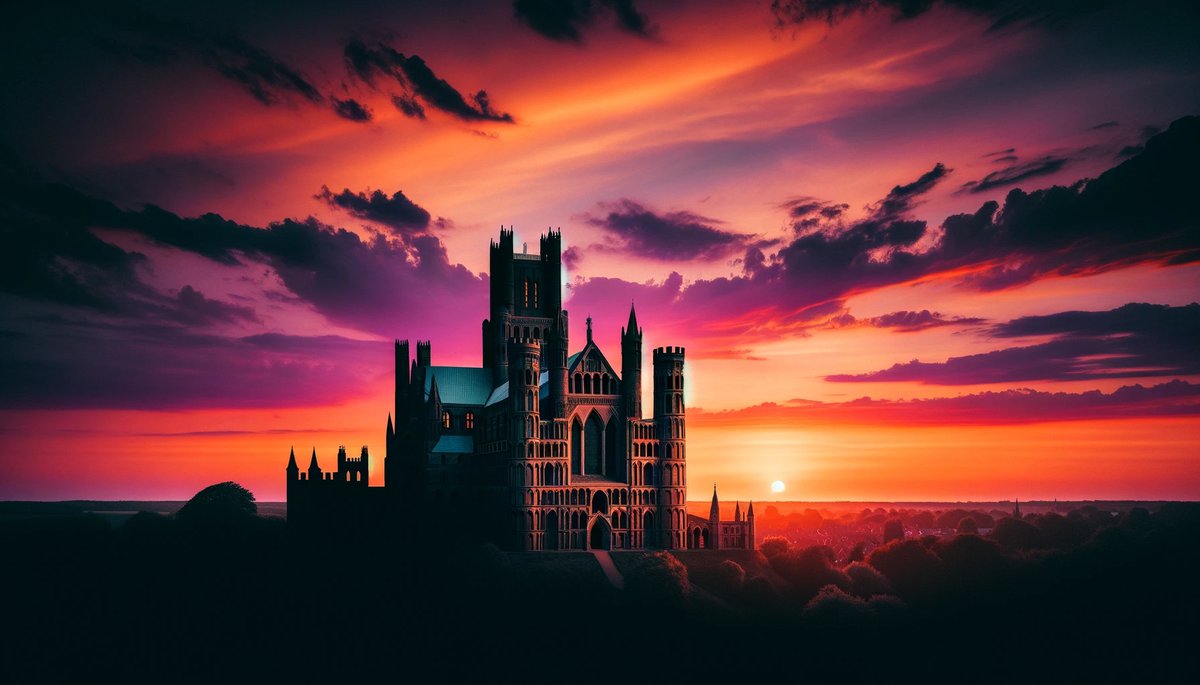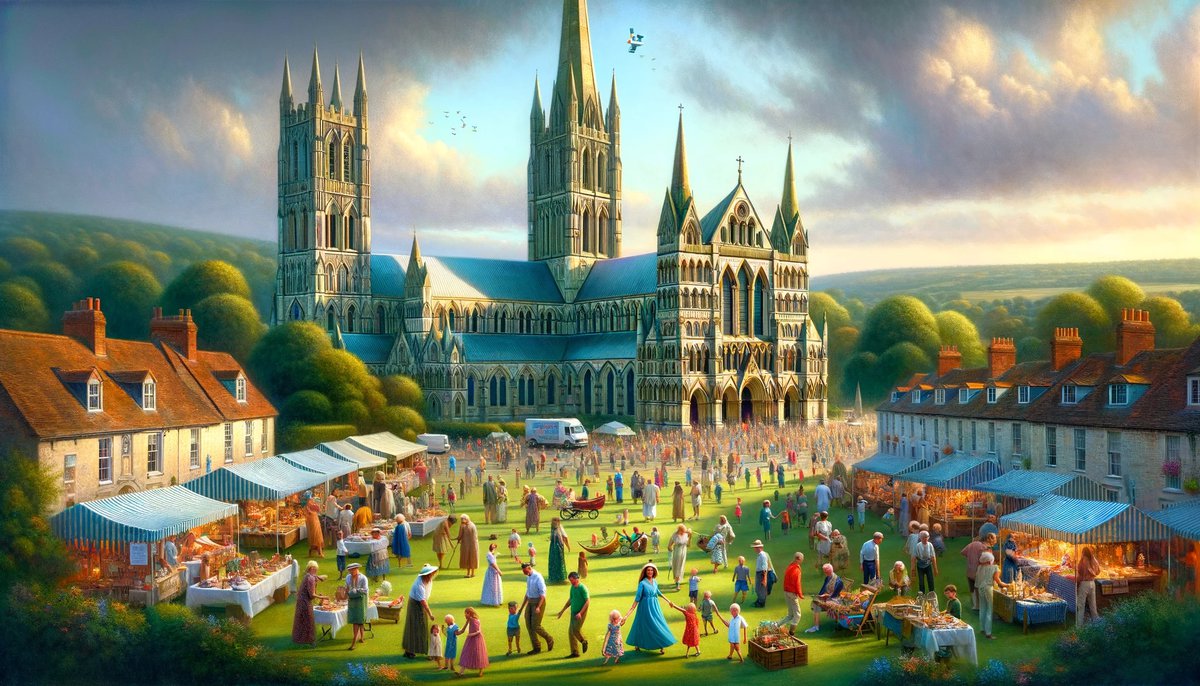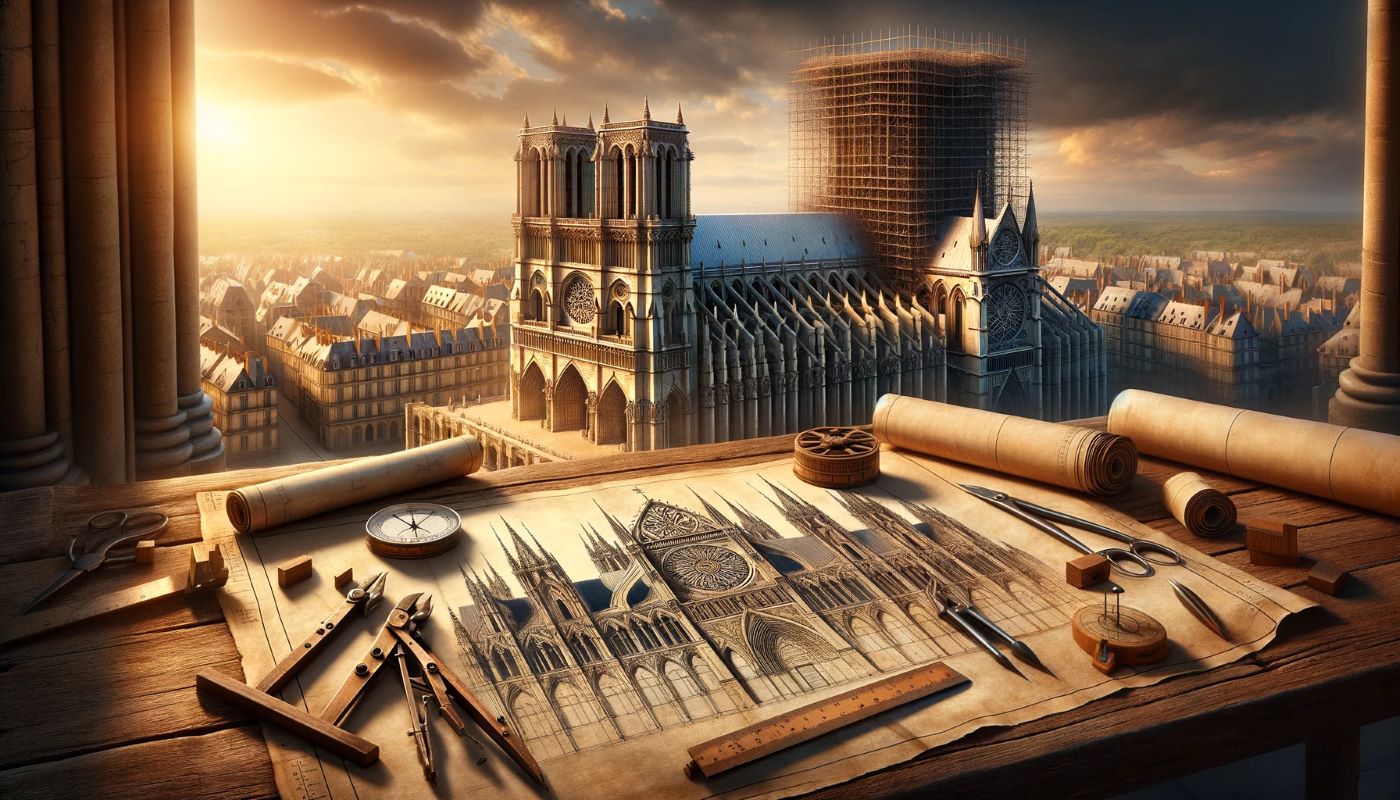Home>Arts and Culture>Who Built The Lincoln Cathedral


Arts and Culture
Who Built The Lincoln Cathedral
Published: February 16, 2024
Discover the rich history and architectural marvel of Lincoln Cathedral, a masterpiece of arts and culture, and learn about the skilled craftsmen who built this iconic landmark. Explore the fascinating story behind the construction of this historic cathedral.
(Many of the links in this article redirect to a specific reviewed product. Your purchase of these products through affiliate links helps to generate commission for Christian.net, at no extra cost. Learn more)
Table of Contents
Introduction
Lincoln Cathedral, also known as the Cathedral Church of the Blessed Virgin Mary of Lincoln, is a magnificent testament to medieval architecture and craftsmanship. Situated in the historic city of Lincoln, England, this iconic structure has stood as a symbol of spiritual devotion and architectural prowess for over nine centuries.
From its towering spires to its intricate stained glass windows, Lincoln Cathedral has captivated the hearts and minds of visitors from around the world. Its grandeur and historical significance make it a must-see destination for anyone with an appreciation for art, history, and religious heritage.
As we delve into the rich history and architectural marvels of Lincoln Cathedral, we will uncover the stories of the visionaries and artisans who dedicated their lives to its creation. From the early origins of the cathedral to the enduring legacy it has left on the world, this exploration will shed light on the enduring allure of this remarkable structure.
Join us on a journey through time and craftsmanship as we unravel the mysteries and marvels of Lincoln Cathedral, a living testament to the ingenuity and devotion of those who came before us.
Read more: When Was Lincoln Cathedral Built
Early History of Lincoln Cathedral
The origins of Lincoln Cathedral can be traced back to the late 11th century, following the Norman Conquest of England in 1066. After William the Conqueror's victory at the Battle of Hastings, he sought to assert his authority over the newly acquired territories, including the city of Lincoln. In 1072, Remigius de Fécamp, a trusted advisor to the king, was appointed as the first Norman Bishop of Lincoln. It was under his leadership that the construction of the cathedral began, marking the inception of a monumental undertaking that would shape the landscape of the city for centuries to come.
The site chosen for the cathedral held deep historical significance, as it was believed to have been the location of a Roman fortress. This strategic positioning atop the Lincoln Cliff not only provided a commanding view of the surrounding area but also imbued the cathedral with a sense of majesty and grandeur. The early years of construction were marked by ambitious plans and a steadfast commitment to creating a structure that would stand as a testament to the power and influence of the Church.
The construction of the cathedral was a laborious and painstaking process, requiring the collective efforts of skilled craftsmen, laborers, and artisans. The use of locally quarried limestone, known as Lincolnshire limestone, became a defining feature of the cathedral's architecture, lending it a distinctive and enduring character. As the cathedral began to take shape, it became a focal point for religious and cultural life in the region, drawing pilgrims and worshippers from far and wide.
The early history of Lincoln Cathedral is steeped in the spirit of ambition and dedication, as generations of builders and visionaries worked tirelessly to bring to life a structure that would transcend time and leave an indelible mark on the world. The cathedral's foundations were laid upon a bedrock of faith, ingenuity, and unwavering determination, setting the stage for the awe-inspiring edifice that would emerge from the rugged terrain of Lincoln.
As the cathedral continued to evolve and expand over the centuries, it became a living testament to the enduring legacy of those who had poured their hearts and souls into its creation. The early history of Lincoln Cathedral serves as a testament to the resilience and creativity of humanity, reminding us of the profound impact that can be achieved through unwavering dedication and a shared vision of greatness.
Construction of Lincoln Cathedral
The construction of Lincoln Cathedral stands as a testament to the unwavering dedication and remarkable craftsmanship of the medieval builders who undertook this monumental endeavor. The ambitious vision of Bishop Remigius de Fécamp, the first Norman Bishop of Lincoln, set the stage for the creation of a structure that would inspire awe and reverence for generations to come.
The construction of the cathedral commenced in 1072, with the laying of its foundations on the hallowed grounds atop the Lincoln Cliff. The strategic positioning of the site not only provided a commanding view of the surrounding landscape but also posed significant engineering challenges. The builders, undeterred by the rugged terrain, embarked on the monumental task of shaping the raw limestone into the soaring arches and towering spires that would define the cathedral's silhouette.
The use of locally quarried limestone, known as Lincolnshire limestone, became a defining feature of the cathedral's architecture. The creamy hue of this stone, when bathed in the golden light of the sun, imbues the cathedral with a timeless radiance, captivating all who behold its splendor. The meticulous craftsmanship and attention to detail displayed in the construction of the cathedral reflect the unwavering commitment of the artisans and laborers who dedicated their lives to this extraordinary project.
As the cathedral began to take shape, it became a beacon of hope and inspiration for the community, drawing pilgrims and worshippers from near and far. The soaring nave, the intricate carvings adorning the façade, and the resplendent stained glass windows all bore witness to the collective ingenuity and creativity of the craftsmen who poured their hearts and souls into every aspect of the cathedral's construction.
The construction of Lincoln Cathedral spanned generations, with each successive wave of builders adding their own unique contributions to the evolving masterpiece. The sheer scale and complexity of the project demanded innovative solutions and unwavering perseverance, resulting in a structure that defied the limitations of its time.
The construction of Lincoln Cathedral stands as a testament to the indomitable spirit of human endeavor, transcending the boundaries of time and culture to inspire wonder and admiration in all who gaze upon its magnificence.
Architectural Features of Lincoln Cathedral
The architectural features of Lincoln Cathedral are a testament to the ingenuity and artistic prowess of the medieval craftsmen who dedicated themselves to creating a structure that would stand the test of time. From its soaring spires to its intricate carvings, the cathedral embodies a harmonious blend of Romanesque and Gothic styles, captivating visitors with its timeless beauty and awe-inspiring grandeur.
One of the most striking features of the cathedral is its towering central spire, which held the title of the tallest building in the world for over two centuries. Rising to a height of approximately 160 meters, the spire commands attention and instills a sense of wonder in all who behold it. The delicate tracery and elegant proportions of the spire exemplify the mastery of medieval engineering and architectural design, serving as a beacon of artistic achievement.
The West Front of Lincoln Cathedral is adorned with a stunning display of medieval sculpture, featuring intricately carved figures and biblical scenes that invite contemplation and reflection. The façade serves as a canvas for the artisans' storytelling, depicting narratives from the Bible with a level of detail and expressiveness that transcends the limitations of stone.
The interior of the cathedral boasts a magnificent nave, adorned with soaring arches and ribbed vaults that create a sense of ethereal grandeur. The play of light and shadow within the cathedral's interior, filtered through its resplendent stained glass windows, evokes a transcendent atmosphere that has inspired worshippers and art enthusiasts for centuries.
The chapter house of Lincoln Cathedral is a marvel of medieval architecture, renowned for its intricately carved stone friezes and its remarkable vaulted ceiling. The delicate tracery and ornate detailing within the chapter house reflect the skilled craftsmanship and artistic vision that defined the medieval era.
The architectural features of Lincoln Cathedral stand as a testament to the enduring legacy of medieval craftsmanship and the timeless allure of Gothic architecture. Each element of the cathedral, from its towering spires to its delicate carvings, invites contemplation and admiration, serving as a living testament to the boundless creativity and unwavering dedication of the artisans who brought this extraordinary vision to life.
Renovations and Additions to Lincoln Cathedral
Throughout its storied history, Lincoln Cathedral has undergone numerous renovations and additions, each contributing to the cathedral's enduring legacy and architectural splendor. These endeavors have not only preserved the cathedral's structural integrity but have also enriched its aesthetic and historical significance, ensuring that it continues to inspire awe and reverence for generations to come.
One of the most notable renovations in the cathedral's history took place in the 14th century, following a devastating earthquake that inflicted significant damage upon the structure. The reconstruction efforts not only restored the cathedral to its former glory but also introduced innovative architectural elements, such as the exquisite tracery in the cathedral's stained glass windows. These renovations marked a pivotal moment in the cathedral's evolution, blending resilience with artistic innovation to create a space that transcended the limitations of its time.
In the 19th century, a comprehensive restoration project led by the esteemed architect James Fowler breathed new life into the cathedral, addressing structural concerns and enhancing its aesthetic appeal. Fowler's meticulous attention to detail and commitment to preserving the cathedral's original design principles ensured that the restoration remained faithful to the spirit of the medieval craftsmen who had first envisioned the cathedral centuries earlier.
The 20th century witnessed further additions to Lincoln Cathedral, including the installation of striking contemporary artworks and the creation of tranquil garden spaces within the cathedral precinct. These thoughtful enhancements not only enriched the visitor experience but also paid homage to the cathedral's enduring role as a patron of the arts and a sanctuary for spiritual contemplation.
In recent years, ongoing conservation efforts have been instrumental in safeguarding the cathedral's architectural treasures, from its soaring spires to its intricate stone carvings. These initiatives reflect a steadfast commitment to preserving the cathedral's legacy for future generations, ensuring that its timeless beauty continues to inspire wonder and admiration.
The renovations and additions to Lincoln Cathedral stand as a testament to the enduring spirit of preservation and innovation that has defined its evolution. Each endeavor, whether born of necessity or inspired by a desire to honor the cathedral's heritage, has contributed to the rich tapestry of its history, reinforcing its status as a living testament to the ingenuity and devotion of those who have safeguarded its legacy across the centuries.
Legacy of Lincoln Cathedral
The legacy of Lincoln Cathedral transcends its physical presence, weaving a narrative of resilience, artistic brilliance, and spiritual significance that continues to resonate with visitors and scholars alike. As a testament to the unwavering dedication of its creators, the cathedral stands as a living chronicle of human achievement, inspiring awe and reverence through its timeless beauty and historical significance.
The cathedral's enduring legacy is rooted in its role as a custodian of medieval craftsmanship and architectural innovation. From its soaring spires to its intricate carvings, every facet of the cathedral reflects the boundless creativity and unwavering commitment of the artisans who brought this extraordinary vision to life. The architectural marvels of Lincoln Cathedral have not only captivated the imaginations of countless admirers but have also served as a wellspring of inspiration for subsequent generations of architects and artists.
Beyond its architectural splendor, Lincoln Cathedral has left an indelible mark on the cultural and religious landscape of England. As a center of pilgrimage and spiritual devotion, the cathedral has provided solace and inspiration to countless worshippers, fostering a sense of community and reverence that transcends the boundaries of time. Its enduring presence has served as a symbol of hope and continuity, offering a sanctuary for reflection and contemplation amidst the ever-changing currents of history.
The legacy of Lincoln Cathedral also extends to its profound impact on the artistic and intellectual heritage of the world. The cathedral's resplendent stained glass windows, intricate sculptures, and awe-inspiring architecture have served as a wellspring of creative inspiration, influencing the works of poets, painters, and musicians across the centuries. Its enduring allure continues to ignite the imagination and stir the souls of all who are fortunate enough to experience its transcendent beauty.
Moreover, the cathedral's legacy is perpetuated through ongoing efforts to preserve and celebrate its historical and cultural significance. The dedication of scholars, preservationists, and custodians ensures that the cathedral remains a vibrant testament to the enduring spirit of human creativity and devotion. By safeguarding its legacy for future generations, Lincoln Cathedral continues to enrich the world with its timeless grace and profound historical resonance.
In essence, the legacy of Lincoln Cathedral is a tapestry woven from the threads of human ingenuity, spiritual devotion, and artistic excellence. It stands as a testament to the enduring power of vision and craftsmanship, inviting all who encounter it to partake in a timeless journey through the annals of history and the boundless depths of human creativity.
Conclusion
In conclusion, Lincoln Cathedral stands as a testament to the indomitable spirit of human creativity and devotion. From its humble beginnings in the aftermath of the Norman Conquest to its enduring legacy as a beacon of architectural splendor, the cathedral has woven a narrative of resilience, artistic brilliance, and spiritual significance that continues to captivate the hearts and minds of visitors from around the world.
The cathedral's early history, marked by the ambitious vision of Bishop Remigius de Fécamp and the unwavering dedication of generations of builders and artisans, serves as a testament to the enduring power of human endeavor. The construction of the cathedral, with its locally quarried limestone and soaring spires, stands as a triumph of medieval engineering and architectural design, transcending the limitations of its time to create a structure that inspires awe and reverence.
The architectural features of Lincoln Cathedral, from its towering spires to its intricate carvings and resplendent stained glass windows, embody a harmonious blend of Romanesque and Gothic styles, inviting contemplation and admiration. Each element of the cathedral reflects the boundless creativity and unwavering dedication of the artisans who poured their hearts and souls into its creation, leaving an indelible mark on the world of art and architecture.
The cathedral's legacy, rooted in its role as a custodian of medieval craftsmanship and architectural innovation, extends beyond its physical presence. It has left an indelible mark on the cultural and religious landscape of England, serving as a center of pilgrimage and spiritual devotion. Moreover, its profound impact on the artistic and intellectual heritage of the world continues to inspire subsequent generations of architects, artists, and thinkers.
As a living testament to the enduring spirit of human creativity and devotion, Lincoln Cathedral invites all who encounter it to partake in a timeless journey through the annals of history and the boundless depths of human ingenuity. Its timeless grace and profound historical resonance ensure that it will continue to enrich the world for generations to come, standing as a beacon of hope and inspiration amidst the ever-changing currents of history.














